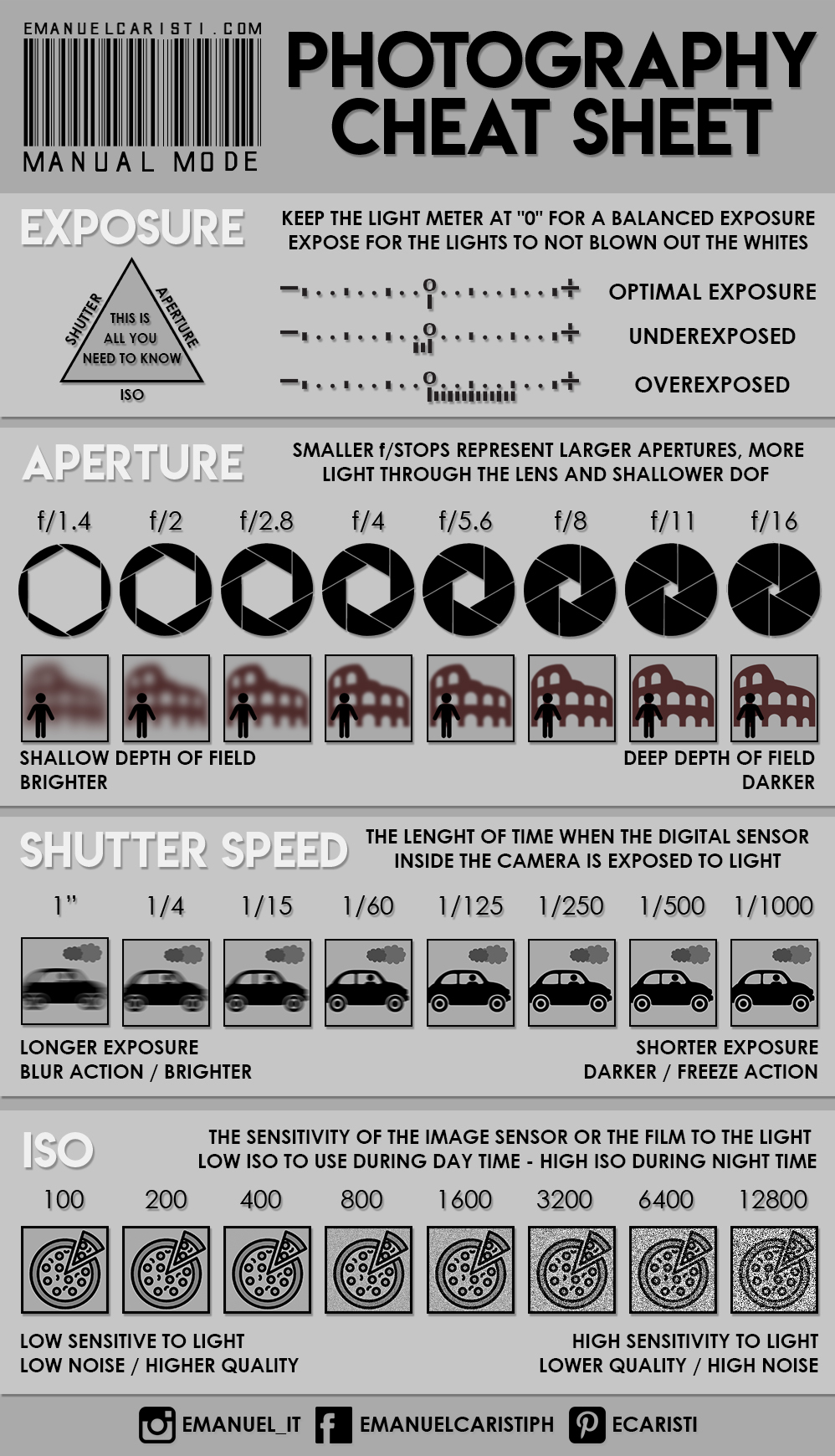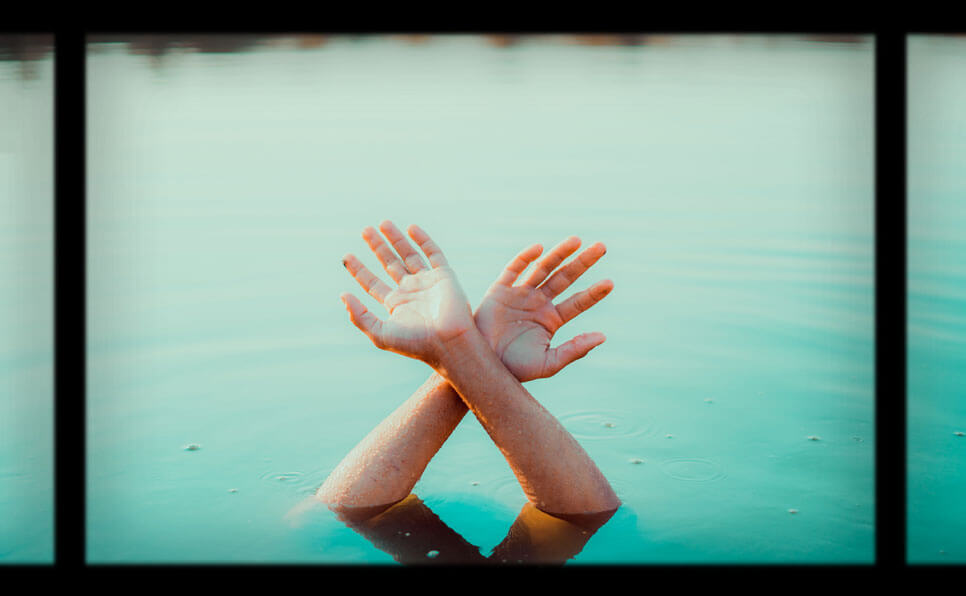Are you ready to elevate your photography skills? Whether you’re a beginner just starting out or someone who’s been snapping photos for a while, understanding the fundamentals can make a huge difference.
Imagine capturing those perfect moments with ease and confidence. This guide is designed to help you do just that. In this Photography Guide, you’ll discover essential tips and tricks that can transform your images from good to breathtaking. You’ll learn about exposure basics, camera settings, and composition tips that are crucial for every photographer to know. But it’s not just about the technical stuff. This guide also delves into the art of storytelling through photography, helping you convey emotions and narratives through your lens. And if you’re looking for a handy reference, check out the Photography 101: Pocket Guide. It’s packed with all the essentials you need to master the art of photography, making it a must-have companion for your creative journey. Keep reading to unlock the secrets of stunning photography that leaves a lasting impression!
Introduction To Photography: Unlock Your Creative Potential
Photography is a wonderful journey into a world of creativity and vision. It’s more than just taking pictures. It’s about capturing moments, emotions, and stories. With the right guidance, anyone can learn to harness this art form. Whether you’re a beginner or looking to refresh your skills, understanding the basics can help you unlock your creative potential.
Understanding The Art And Science Of Photography
Photography combines art and science in a fascinating way. Art allows you to express your vision. Science ensures your images are technically sound.
- Artistic Elements: Composition, color, and lighting form the artistic core.
- Scientific Aspects: Exposure, aperture, and shutter speed are critical technical elements.
These elements work together to produce a compelling image. Learning how to balance them is key to becoming a skilled photographer.
Why Photography Is A Powerful Creative Outlet
Photography offers limitless opportunities for creative expression. Each photograph tells a unique story and conveys emotions.
- Self-Expression: Showcase your perspective of the world.
- Storytelling: Capture moments that words can’t describe.
- Innovation: Experiment with different techniques and tools.
Photography encourages you to see beauty in everyday life. It’s a tool to express thoughts and emotions visually, making it a powerful outlet for creativity.
For a deeper dive into exposure and camera settings, consider exploring resources like Photography 101: Pocket Guide. It provides essential insights into exposure basics, camera settings, and more.
Essential Photography Equipment
Photography can be an art, a profession, or a hobby. Whether you are a beginner or an expert, using the right equipment is crucial. It enhances your skill and brings your vision to life. Investing in the right tools can transform your photography experience.
Cameras: Finding The Right Fit For Your Needs
Choosing a camera depends on your goals and budget. Some popular types include:
- DSLR Cameras: Known for their versatility and image quality.
- Mirrorless Cameras: Compact and offer great performance.
- Compact Cameras: Perfect for travel and casual photography.
Consider the sensor size and features. Full-frame sensors capture detailed images. Crop sensors are more affordable and lightweight. Check the camera’s megapixels, but remember, more isn’t always better.
Lenses: How Different Types Affect Your Photography
Lenses play a significant role in image outcome. Different lenses serve different purposes:
- Prime Lenses: Fixed focal length, excellent for sharp images.
- Zoom Lenses: Variable focal length, versatile for different scenarios.
- Wide-Angle Lenses: Capture expansive scenes, ideal for landscapes.
- Telephoto Lenses: Great for distant subjects, like wildlife.
Choose lenses based on the photography style you enjoy. Portraits benefit from prime lenses. Landscapes shine with wide-angle lenses.
Accessories: Enhancing Your Photographic Experience
Accessories can elevate your photography. Consider adding these to your gear:
| Accessory | Purpose |
|---|---|
| Tripod | Stabilize your camera for sharp images. |
| External Flash | Improve lighting in low-light conditions. |
| Camera Bag | Protect and organize your equipment. |
| Memory Cards | Store more photos and videos. |
Filters, like ND and polarizing, enhance your images. They control light and reflections. A remote shutter release helps with long exposures or group shots. Keep your camera clean with a cleaning kit. It prolongs the life of your gear.
Mastering The Fundamentals Of Photography
Photography is an art form that captures moments. Understanding its basics is essential. This guide will help you grasp key elements. Mastering these will enhance your skills significantly.
Exposure: Balancing Aperture, Shutter Speed, And Iso
Exposure is the key to a great photo. It involves three elements: aperture, shutter speed, and ISO. Balancing these is crucial. Aperture controls the light entering the camera. It affects depth of field.
Shutter speed determines how long the camera sensor is exposed to light. It influences motion blur. ISO measures the sensor’s sensitivity to light. A higher ISO can brighten your image but adds noise.
| Element | Function | Effect |
|---|---|---|
| Aperture | Controls light entry | Depth of field |
| Shutter Speed | Exposure duration | Motion blur |
| ISO | Sensor sensitivity | Image noise |
Composition: Techniques To Create Captivating Images
Composition is about arranging elements in your frame. Use the rule of thirds for balanced images. Place the subject along the grid lines or at intersections. This creates interest and focus.
Leading lines guide the viewer’s eye through the photo. They add depth and perspective. Symmetry and patterns bring harmony to your shots. Break these rules to evoke emotions or highlight features.
- Rule of Thirds
- Leading Lines
- Symmetry and Patterns
Lighting: Harnessing Natural And Artificial Light
Lighting sets the mood in your photos. Natural light is abundant and versatile. Golden hour, just after sunrise or before sunset, offers soft, warm light. Harsh midday sun can create strong shadows.
Artificial light includes lamps and flashes. Use these to control lighting conditions. Softboxes and reflectors help diffuse light. They eliminate harsh shadows and create even illumination.
- Natural Light
- Artificial Light
- Diffusion Techniques

Credit: emanuelcaristi.com
Advanced Photography Techniques
Photography is a journey of endless exploration. Once you’ve mastered the basics, delving into advanced techniques can transform your images. These techniques offer new ways to capture the world around you. From the dynamic energy of long exposures to the intimate details of macro shots, each technique adds depth and emotion to your work.
Long Exposure Photography: Capturing Movement And Light Trails
Long exposure photography allows you to capture movement and create stunning light trails. This technique involves using a slow shutter speed, which lets more light into the camera. As a result, moving subjects blur while stationary objects remain sharp. To achieve this, use a tripod to stabilize your camera. Adjust the shutter speed based on the desired effect. A shutter speed of several seconds works well for capturing city lights or flowing water.
Consider using a neutral density filter to reduce the amount of light entering the lens. This is especially useful during daylight. This filter enables longer exposure times without overexposing the image. Experiment with different compositions to see how light interacts with your subjects. Create vibrant light trails, capture serene landscapes, or depict bustling cityscapes.
Macro Photography: Revealing The Beauty Of Small Subjects
Macro photography unveils the intricate details of small subjects. This technique magnifies your subject, capturing textures and patterns unseen by the naked eye. A macro lens is essential for this type of photography. It allows you to focus closely and achieve a high level of detail. Lighting is crucial in macro photography. Use diffused light to minimize harsh shadows and highlight the subject’s features.
Patience is key when shooting macro images. Small movements can affect focus and composition. Use a tripod to maintain stability. Adjust your aperture to control depth of field. A smaller aperture increases focus across the subject, while a larger aperture isolates specific details. Experiment with various angles and perspectives to showcase the subject’s uniqueness.
Portrait Photography: Capturing Personality And Emotion
Portrait photography aims to capture the essence of a person’s personality and emotion. This technique involves more than just pointing the camera at the subject. Engage with your subject to make them comfortable. This helps reveal genuine emotions and expressions. Use natural light to create soft and flattering effects. If indoors, try placing your subject near a window for diffused lighting.
Composition plays a significant role in portrait photography. The rule of thirds can create balanced images. Position your subject off-center for a dynamic look. Focus on the eyes to bring emotion and depth to the portrait. Experiment with different lenses. A 50mm lens creates a natural perspective, while a telephoto lens compresses features for dramatic effects.
Post-processing And Editing
Photography captures moments, but post-processing refines them. Through editing, photographers enhance photos, bringing out details and colors. The editing process can transform an average image into a captivating piece. This section explores essential aspects of post-processing and editing.
Introduction To Photo Editing Software
Editing software is crucial in the photographer’s toolkit. Popular choices include Adobe Photoshop, Lightroom, and GIMP. These tools offer a range of features for both beginners and professionals. They allow photographers to adjust exposure, crop images, and perform detailed retouching.
Lightroom is favored for its user-friendly interface. It offers excellent batch processing capabilities. Photoshop excels in precise editing and complex manipulations. GIMP is a great free alternative with robust features. Each software has unique strengths, so choose based on your needs.
Enhancing Photos: Color Correction And Retouching
Color correction is vital for achieving natural-looking images. Adjust the white balance to correct color casts. Tweak saturation and contrast to make colors pop. Retouching helps remove imperfections. Use it to smooth skin or remove blemishes.
- White Balance: Corrects color temperature for natural tones.
- Saturation: Enhances color intensity.
- Contrast: Increases the difference between light and dark areas.
- Retouching: Removes unwanted elements and smooths textures.
Remember to maintain a balance. Over-editing can make images look unnatural.
Creative Editing: Transforming Images With Filters And Effects
Filters and effects can dramatically change the mood of a photo. They allow creative expression and can give images a unique style. Filters can simulate film effects or add vintage vibes. Effects like vignettes draw attention to the subject.
- Filters: Apply preset looks for quick transformations.
- Vignette: Darkens the edges to focus on the center.
- HDR Effects: Enhance dynamic range for detailed images.
Experiment with different settings. Find the style that best suits your vision. Creative editing offers endless possibilities. Use it to bring your artistic ideas to life.
Building A Personal Photography Style
Creating a personal photography style is essential for expressing your unique vision. A distinct style sets your work apart and resonates with your audience. It reflects your perspectives, experiences, and the emotions you want to convey through your images. Developing this style involves exploring different elements that contribute to your visual identity.
Finding Inspiration: Drawing From Various Sources
Inspiration fuels creativity and helps shape your photography style. Look at the work of renowned photographers and delve into art forms like painting and sculpture. Nature, architecture, and everyday life can also inspire compelling visuals. Consider cultural influences and historical contexts to broaden your perspective. Analyzing diverse sources ignites creativity and enhances your visual storytelling.
Experimentation: Developing Your Unique Visual Language
Experimentation is key to discovering your unique visual language. Try different camera settings, play with exposure and composition, and explore various lenses. Capture images in diverse lighting and weather conditions. Use editing tools to transform and enhance your photos. Experimenting with techniques encourages creativity and helps refine your personal style.
Storytelling: Creating Narratives Through Images
Photography is a powerful storytelling medium. Each image can tell a story, evoke emotions, and convey messages. Focus on creating narratives through your photos by considering elements like subjects, settings, and mood. Use composition and color to guide the viewer’s eye and emphasize key aspects. Crafting compelling stories through imagery engages audiences and makes your work memorable.
Sharing And Showcasing Your Work
Creating and sharing your photography can be as rewarding as taking the photos themselves. This part of your journey allows you to connect with a wider audience, receive valuable feedback, and grow as an artist. Below, we will explore some effective strategies to share and showcase your photography work.
Creating An Online Portfolio To Reach A Wider Audience
An online portfolio is crucial for reaching new viewers. It serves as your virtual gallery, showcasing your best work to the world. Here are some tips to create an impactful portfolio:
- Select your best photos: Quality over quantity is vital. Choose images that represent your style.
- Organize by themes or categories: This makes navigation easier for viewers.
- Use a simple design: A clean layout keeps the focus on your photos.
- Optimize for SEO: Use keywords in titles and descriptions to improve visibility.
Engaging With Photography Communities For Feedback And Growth
Joining photography communities can significantly aid your development. These platforms offer insights, critiques, and support. Consider the following:
- Participate actively: Share your work and comment on others’ photos.
- Seek constructive feedback: Honest critiques can guide your improvement.
- Join online forums: Engage in discussions and learn from experienced photographers.
Participating In Exhibitions And Competitions
Exhibitions and competitions provide opportunities to showcase your talent. They help you gain recognition and experience. Here’s how to get started:
- Research local and online events: Find ones that match your style.
- Submit your best work: Choose images that stand out.
- Prepare for feedback: Be open to learning from judges’ comments.
Exhibitions can also help you network with other photographers, expanding your professional circle.

Credit: capturetheatlas.com
Photography As A Career: Opportunities And Challenges
Photography isn’t just a hobby; it can be a rewarding career. It offers creative freedom, but also demands a strategic approach. Understanding the opportunities and challenges can help aspiring photographers thrive.
Exploring Different Photography Career Paths
Photography offers diverse paths. Each has unique demands and rewards:
- Wedding Photography: Capturing special moments, this path requires excellent interpersonal skills.
- Commercial Photography: Focuses on products or advertising, demanding technical precision.
- Portrait Photography: Emphasizes individual expression, requiring creative direction.
- Fashion Photography: Combines art and commerce, needing industry knowledge.
Choosing the right path involves considering your interests and skills.
Building A Client Base And Marketing Your Services
Successful photographers cultivate a strong client base. Here are some ways:
- Networking: Attend events to meet potential clients.
- Online Presence: Utilize social media to showcase work.
- Portfolio Development: Create an impressive portfolio to attract attention.
- Referrals: Encourage satisfied clients to recommend your services.
Effective marketing strategies help sustain and grow your business.
Balancing Creative Passion With Business Demands
Balancing creativity and business is crucial. It requires managing time and resources efficiently. Focus on:
| Aspect | Focus |
|---|---|
| Creative Projects | Prioritize passion-driven work |
| Business Tasks | Handle administrative duties |
| Financial Management | Track income and expenses |
Balancing both aspects ensures growth and satisfaction.
Conclusion: Continuing Your Photography Journey
Embarking on a photography journey is a thrilling experience. It evolves as you grow and learn more. This adventure doesn’t end with mastering the basics. Instead, it opens doors to endless possibilities. The world of photography offers continuous learning and creativity.
Lifelong Learning: Staying Updated With Trends And Techniques
Photography is an ever-changing field. New trends and techniques emerge regularly. Staying informed is crucial for improvement. Engage with online courses and workshops. Follow photography blogs and join online communities. These resources help in keeping up with the latest advancements.
Consider attending local photography exhibitions. They provide insights into current styles and methods. Subscribing to photography magazines is also beneficial. It’s a simple way to stay updated with industry news and trends.
Sustaining Creativity: Keeping Your Passion Alive
Creativity is the heart of photography. To sustain it, explore different subjects. Experiment with various styles and settings. This adds freshness to your work.
Set personal projects and challenges. They push you beyond your comfort zone. Collaborate with other photographers. Sharing ideas fuels inspiration and innovation.
- Explore different photography genres
- Participate in photography contests
- Join photography clubs or groups
Encouragement: Embrace Mistakes And Celebrate Progress
Mistakes are part of the learning process. Embrace them as opportunities for growth. Analyzing errors leads to improvement.
Celebrate every small achievement. It boosts confidence and motivation. Keep a portfolio to track your progress over time. Reflecting on past work shows how far you’ve come.
- Identify areas for improvement
- Set realistic goals
- Reward yourself for milestones achieved
Your photography journey is unique. Enjoy every step and moment.

Credit: www.reddit.com
Frequently Asked Questions
What Is The 20-60-20 Rule In Photography?
The 20-60-20 rule in photography suggests focusing 20% on creativity, 60% on technical skills, and 20% on post-processing. This balance ensures well-composed, technically sound images with creative flair, enhancing visual storytelling and engagement.
What Are The 5 C’s Of Photography?
The 5 C’s of photography are composition, contrast, clarity, color, and creativity. Composition ensures balanced framing. Contrast highlights differences. Clarity sharpens details. Color enhances mood. Creativity brings unique perspectives.
What Are The 7 Elements Of Photography?
The seven elements of photography are line, shape, form, texture, pattern, color, and space. Lines guide the viewer’s eye. Shapes define objects. Form adds depth. Texture provides detail. Patterns create rhythm. Color evokes emotion. Space offers perspective and balance. Each element enhances the composition and storytelling.
What Is The 500 Or 300 Rule In Photography?
The 500 or 300 rule helps photographers avoid star trails in night photography. Divide 500 or 300 by your lens’s focal length to find the maximum exposure time in seconds. Use 500 for full-frame cameras and 300 for crop sensors to capture sharp stars.
Conclusion
Photography is a captivating journey of creativity. This guide offers essential tips for beginners. Understanding exposure and composition can transform your photos. With the right camera settings, every moment becomes a masterpiece. For more insights, consider checking out the Photography 101: Pocket Guide. It provides useful tips for enhancing your skills. Photography is about capturing moments and emotions. Keep learning, experimenting, and enjoying the art. Let your photos tell your stories.


